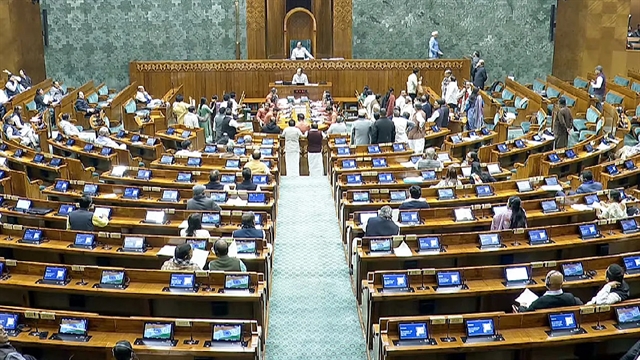 World
World

A strong aftershock sent panicked residents fleeing into the streets on Sunday -- hours after a 5.9-magnitude earthquake killed at least 12 people along Haiti's northwest coast.
GROS-MORNE, Haiti — A strong aftershock sent panicked residents fleeing into the streets on Sunday -- hours after a 5.9-magnitude earthquake killed at least 12 people along Haiti’s northwest coast.
AFP journalists in the Caribbean nation of 11 million reported strong shaking, felt around the coastal city of Port-de-Paix. It was not immediately clear if it had done any notable damage.
Saturday’s quake, centered 19 kilometres northwest of Port-de-Paix, injured more than 188 people, damaging or leveling several homes and public buildings.
The tremor rattled the capital Port-de-Prince, sparking fear among residents still reeling from the massive 2010 earthquake that left at least 200,000 people dead and 300,000 more injured.
President Jovenel Moise and Prime Minister Jean-Henry Ceant traveled to the affected area to view the damage and coordinate relief efforts.
Moise tweeted pictures from Port-de-Paix, where he was briefed at the region’s emergency response center, met victims, viewed damage to the police headquarters and offered thanks to local officers. He reported seeing damage to other buildings as well.
Moise also visited Gros-Morne, about 30 miles to the southeast. He praised residents for their "show of solidarity and support," and urged them to remain calm.
Saturday’s quake, which was felt across the country, struck at 8:10 pm (0010 GMT Sunday) at a shallow depth of 7.3 miles.
The government said eight of the 12 victims were killed in Port-de-Paix, capital of Haiti’s Nord-Ouest department, while three were in Gros-Morne and one in Saint-Louis-du-Nord.
The town of Chansolme and the small island of Tortuga also suffered damage, officials said.
‘Remain calm’
"I urge the population to remain calm," Moise said in a tweet on Saturday.
Some of the injuries were sustained when people panicked after the initial quake, the civil protection agency said.
The agency confirmed that some homes were destroyed or damaged, without offering specific figures.
The Nord-Ouest department is the poorest part of impoverished Haiti, with many areas isolated due to the dire state of the roads.
There was an unusual buzz of activity, however, at the site in Gros-Morne where a community center had collapsed. Residents using saws or their bare hands scrambled to recover metal support rods from the debris for resale, before being chased away by authorities.
The building’s guard, who was sleeping at the time of the quake, was killed.
A woman watching the disaster unfold, 49-year-old Rosette Jerome, said no one in her neighborhood had been killed but added that a child was seriously injured by a piece of falling masonry.
Haitian officials said a convoy bringing food and drinking water was headed to the afflicted zone.
A tweet from the US Embassy in Haiti expressed condolences to all affected and said "we stand ready to assist in the relief effort, if requested".
The UN representative in Haiti, Helen La Lime, also offered help.
A major international relief effort followed the devastating 7.0-magnitude quake that struck the island in January 2010, leaving more than 1.5 million people homeless. Tens of thousands remain in makeshift camps.
Damage was estimated to total 120 percent of GDP in Haiti, the poorest country in the western hemisphere.
Longer-term reconstruction has been hampered by lingering political chaos in the nation of nearly 11 million people, and by a deadly cholera epidemic introduced by infected Nepalese UN peacekeepers sent in after the quake. — AFP

.jpg)


